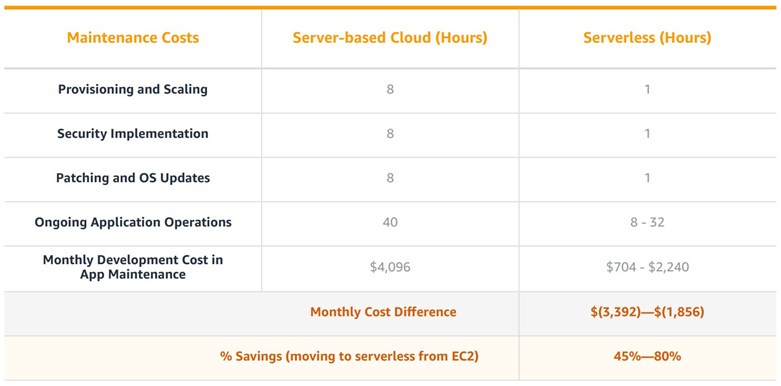For many CIOs and CFOs, it’s what keeps them up at night: The ticking clock of wasted operating costs that burn a hole in their Digital Budgets, driving down their return on technology investment.
Collectively, European enterprises waste a staggering £8.8 million a year on under-utilised cloud services, warns Insight Intelligent Technology Index.
As a CIO yourself, you might already oversee a huge amount of cloud services that add little or no value to your organisation.
Put simply, it’s money down the drain.
Across industry, the figure boils down to £1004 wasted every…single…hour…due to high operational costs of unused compute times, expensive software licences or developers having to do everything the “hard and slow way” or with antiquated technologies.
In today's competitive digital landscape, CIOs constantly seek new ways to optimise their operations, enhance user experiences and reduce operating costs to maximise their budgets, and do more with less.
Unlock the cost cutting solution of Serverless Architecture and Technology
One innovative solution that has gained significant traction is serverless architecture and technology. This technology not only delivers scalability and flexibility, but also the potential to massively reduce development and maintenance costs that extend way beyond just efficient resource utilisation.
What is serverless?
Serverless, often misunderstood as the absence of servers, is a cloud computing model that removes server management away from developers.
Instead of provisioning and managing servers, serverless enables developers to focus on writing code in the form of functions. The main benefit of serverless is boosting value back to your organisation.
Serverless functions are executed in response to specific events, such as HTTP requests, database changes, or scheduled tasks. Cloud providers, like AWS Lambda, Azure Functions, and Google Cloud Functions, automatically manage the infrastructure, scaling, and maintenance of these functions.
As a CIO, the amount of money you can save by using serverless computing technology can vary widely depending on many factors, such as the size and complexity of your applications, the level of traffic they receive, and how efficiently you optimise your resources.
So in what specific ways can serverless achieve these cost savings*?
Low level maintenance expenditure

The below figures are converted from dollars to pounds and are approximate.
Maintenance accounts for the time and resources spent on ongoing tasks once the application is deployed in production: “Cost to Support” an application. A developer can spend 8-10 hours a month on application provisioning, security implementation, and patching and OS updates. An extra 40 hours a month is spent in application monitoring. With serverless capabilities, such as Lambda, most of these maintenance tasks are no longer required because they are fully managed by the cloud provider. This allows the developers to focus their time and resources on developing the core capability.
Saving per month: £2661 or between 45% and 80% per month: £3213 v £552
Reduced Infrastructure Costs
When layering the additional benefits and cost savings of a serverless model, organisations can save significantly by constructing applications to effectively leverage a serverless architecture. In a serverless model, infrastructure cost is based on actual execution time, i.e. the application owner is only charged when the code is executed effectively achieving a 100% server utilisation. AWS Lambda, for example, is charged based on number of requests and duration of the request.
Saving per month: £342: £502 v £160
Lower Development Costs

A serverless application leverages an event-based architecture, allowing development teams to start developing the application rather than planning a robust deployment architecture. On average, a serverless environment takes 68% less time to provision compared with an instance-based environment, which can equate to hundreds of pounds in savings per month per application.
Saving per month: £1456 per month: £3214 v £1758
Reduced Resource Outlay
In a traditional VM setup, you might be paying for resources even during periods of low or no traffic. With serverless, you only pay for actual usage or compute time down to milliseconds versus hours with other models. Code is only invoked when triggered by a request, and the provider only charges for compute time used by that execution, rather than a flat monthly fee for maintaining a physical or virtual server
Faster Development Cycles
Quicker development and deployment due to the serverless model can achieve faster time-to-market, meaning that products and services spend less time in deployment not being used, and therefore lost revenue competitors getting to market first.
Demonstrate greater Digital Budget ROI to your Senior Management Team

The above savings equate to reduced Total Cost Of Ownership which, in some cases, can reduce from £4337 to £2774 a month by migrating to a serverless architecture. As an AWS-certified specialist, Exception will enable you as a CIO to realise the many serverless benefits.
All adds up to maximising your Digital Budget, demonstrating to senior management how you can drive digital efficiencies and minimising your running costs to achieve greater Return On Investment (ROI).
Ultimately, serverless architecture is a powerful way to make your cloud technologies pay, while providing the scalability and agility to develop and release products and services at pace.
And the final take away?
As a CIO, embracing serverless isn't just about reducing your operational expenses—it's about unlocking a more efficient and responsive way of building and running applications.
Developing your products and services at pace is vital in today's fast-moving competitive landscape. And this is influenced by the ability to innovate iteratively.
Exception uses serverless technology to help enable organisations achieve all these cost saving benefits and much more.
Discover how our Serverless Adoption Framework (SAF) can put you on the best path to boosting cost efficiency.
Arrange your free half day workshop
*Deloitte study comparing Serverless with Amazon EC2
Back to all insights
